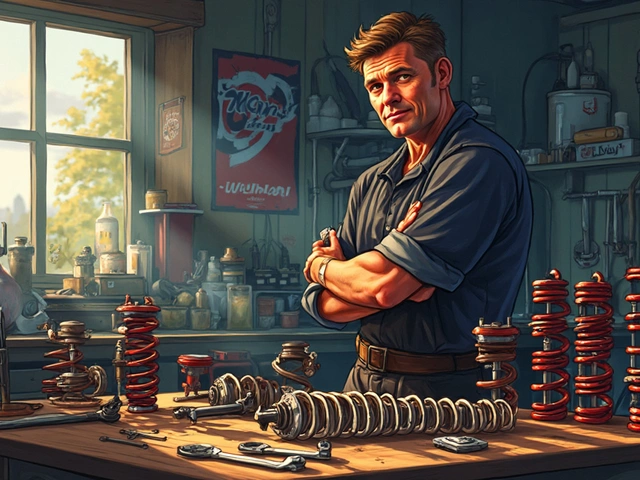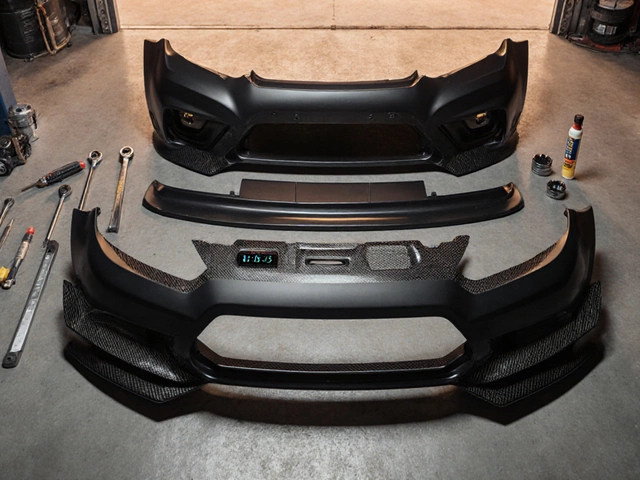If car exhausts had a dating app, the sound would be the dealbreaker or the dealmaker. Everyone's got an opinion—some folks crave deep, throaty rumbles, others want a sharp, raspy scream during acceleration. So, which exhaust actually sounds the best? The short answer: it depends on your taste, your car, and where you drive.
The sound of a custom exhaust isn't just a happy accident. Pipe diameter, muffler style, materials, and even the engine itself decide what comes out the back end. A custom exhaust can make a city hatchback sound like a rally monster—or turn a V8 muscle car's growl into an angry beast that'll rattle your windows. If you're hunting for that perfect note, knowing what changes what (and why) will help you get there without blowing cash on the wrong setup.
- What Shapes Exhaust Sound?
- Straight Pipes vs Mufflers
- Resonators: Do They Matter?
- Materials and Pipe Diameters
- Legal Limits and Neighbor Issues
- Choosing Your Perfect Tone
What Shapes Exhaust Sound?
If you want to change how your car sounds, you have to know what’s actually tweaking that noise. The exhaust sound isn’t just the engine letting off steam. There’s a science behind every rumble, pop, or drone coming from your tailpipe.
Start with the basics: your engine type is rule number one. A V8 naturally sounds deeper and fuller than a four-cylinder. But after the engine, the real game changers for your exhaust sound are how the pipes are laid out, what they're made of, and the actual bolt-on parts you use.
- Pipe Diameter: Bigger pipes generally make a deeper, louder sound. Small pipes give you a higher-pitched note. But too big can mean you lose low-end power—so it’s about balance, not just noise.
- Muffler Design: Straight-through mufflers (like glasspacks) give you a raw, aggressive sound. Chambered mufflers (like Flowmaster) add that signature muscle car rumble. Turbo mufflers are somewhere in between: not quiet, not too wild.
- Resonators: These help chop down the raspy, harsh frequencies that can make an exhaust flat-out annoying. Some people pull them out for volume, but then you risk the dreaded highway drone.
- Material: Stainless steel holds up and often gives a sharper sound. Aluminized steel is more about keeping costs low, though it can rust faster. Titanium is light and makes for a higher-pitched, crisp note (but it’ll hit your wallet hard).
Here's a quick look at how some parts and choices stack up for shaping sound:
| Part/Factor | Effect on Sound |
|---|---|
| Pipe Diameter | Deeper with bigger pipes; higher-pitched with smaller pipes |
| Engine Type | V8 = deep/rumble, I4 = higher/nasally, 6-cylinder = smooth, balanced |
| Muffler Type | Glasspack = loud/raw, Chambered = rumble/controlled, Turbo = mellow |
| Resonator | Cuts harshness, reduces drone |
| Material | Stainless = crisp, Titanium = high/racey, Aluminized = meh |
Don’t forget, bends and welds matter too. Mandrel-bent pipes let gases (and sound) flow smoother, boosting both power and noise clarity. Crimped or crushed bends usually end up muffling things a bit and can cause weird, unpredictable tones.
Quick tip: before you shell out for that new exhaust, listen to clips online of setups like yours. Pay attention to the details—what sounds mind-blowing on a turbocharged Honda can be a total letdown on an old truck. If you mess up and Gizmo gets spooked every time you start the car, you probably went too far. Trust me, I’ve been there.
Straight Pipes vs Mufflers
So, what’s the real difference between straight pipes and mufflers? The answer comes down to how much you want to hear your ride (and how much you want everyone else to hear it). With a custom exhaust setup, picking between a straight pipe and a muffler literally changes everything about your car’s voice.
Straight pipes are just that—pipes with no restrictions. You skip the mufflers and resonators, letting exhaust gases (and sound) out as fast as possible. The big advantage? Pure, raw sound that’s almost always loud and attention-grabbing. Many performance cars at the track run straight pipes for this exact reason: fewer restrictions mean more power and that classic racecar scream. But let’s keep it real—on the street, that straight pipe blast is often too much for daily driving, and can get you ticketed for excessive noise.
Mufflers are all about taming the beast. They use chambers, baffles, and sometimes even fiberglass packing to knock down sound levels and change the exhaust tone. Some are built to give a deep, mellow rumble; others target sharp, sporty notes. High-end performance mufflers like Flowmaster or Borla will reduce noise but still keep most of the character of your engine. On the other hand, stock mufflers prioritize silence, almost muting your engine entirely.
Here’s a quick comparison:
| Feature | Straight Pipe | Muffler |
|---|---|---|
| Volume | Very loud | Moderate to quiet |
| Sound Quality | Raw, aggressive | Controlled, tuned |
| Performance | Slight increase (less restriction) | Can lose 2-5% horsepower (minor) |
| Street Legal | Rarely | Usually |
One thing to watch for: a straight pipe might make your car “drone” at certain RPMs—think of a monotonous buzz that never goes away. Mufflers are designed to fight that, saving your sanity on longer drives.
If you’re doing this for looks and daily driveability, a good aftermarket muffler usually hits that sweet spot between power, tone, and not annoying your neighbors (or the local cops). Straight pipes are fun, but only in the right setting.
Resonators: Do They Matter?
Resonators get less attention than mufflers, but they seriously shape your exhaust note. Think of them as the traffic cops for sound waves: they let the good noises through and cancel the ones that annoy your ears. Most stock exhausts include a resonator for this reason—they cut down on high-pitched droning and make highway cruises way more tolerable.
Unlike mufflers, resonators don’t kill all the volume; they just tune the frequency. The idea is to control those buzzy, tinny sounds that sometimes make your car sound cheap or irritating. If you’ve ever heard a car that blasts an obnoxious, boomy tone at certain speeds, that’s probably a setup missing its resonator.
| Exhaust Component | Main Job | Effect on Sound |
|---|---|---|
| Muffler | Reduce overall volume | Makes sound quieter, can muffle character |
| Resonator | Tune and cancel specific frequencies | Smooths out raspy or droning noises |
| Straight Pipe | No noise control | Loud, often harsh or tinny |
Plenty of people yank out their resonators to get a louder sound, but you'll often trade the nice, clean tone of a custom exhaust for a racket that gets on your nerves quickly. Resonators are especially handy if you want your car to sound aggressive only when you push the pedal, not when you're just cruising at a steady speed.
- Want deep, throaty sounds? Keep or add a resonator.
- Love raspy, high-pitched notes? Removing the resonator amps that up, but daily driving can get old fast.
- If you commute on highways, a resonator saves your sanity by killing drone at steady speeds.
There’s no rule that says every ride needs one, but most builders agree: a well-tuned resonator makes the exhaust note smoother and more refined, especially on four- and six-cylinder engines.

Materials and Pipe Diameters
What your exhaust system is made of and how big the pipes are make a real difference in what it sounds like (and how long it lasts). It’s not just looks or price—the choice actually changes your car’s note and volume.
Steel is the standard for most factory and budget exhausts. It’s cheap and strong but doesn’t last as long, especially if you drive somewhere salty. Stainless steel stands up better to rust and sticks around for more years. It still gives you a strong tone, but it's pricier. Aluminumized steel is a mix of both worlds: a bit more rust-resistant than plain steel, not as expensive as full stainless. And, for those who want to show off, titanium makes exhausts super light and flashy, with a higher-pitched sound and crazy price tag.
Now, about the actual pipe size. This isn’t just about looking cool—bigger doesn’t always mean better sound. The inside diameter of your pipes controls how fast and how much exhaust flows out. Here’s what usually happens:
- Small pipes (like 2 to 2.25 inches): Good for four-cylinders and daily driving. Tends to sound smoother and not too loud.
- Medium pipes (2.5 to 3 inches): Lets more air flow, gives a stronger growl, popular for street and mild performance cars.
- Big pipes (3+ inches): Made for high-horsepower builds. Sounds deeper and way louder, but sometimes gets raspy or boomy if your engine isn’t making big power.
Take a look at how material and diameter stack up:
| Material | Cost | Sound | Durability |
|---|---|---|---|
| Steel | Low | Standard | Low |
| Stainless Steel | Medium-High | Clean, slightly deeper | High |
| Aluminumized Steel | Medium | Similar to steel | Medium |
| Titanium | Very High | Sharper, higher pitch | Very High |
Choosing the right pipe size and material for your custom exhaust comes down to your car’s engine, your driving style, and what kind of tone you’re chasing. The wrong combo can leave your ride sounding flat—or blaring like a broken trumpet.
Legal Limits and Neighbor Issues
Here’s the thing: even if your new exhaust sound gets you hyped every time you start the engine, you still have to deal with noise laws and, sometimes, annoyed neighbors. In the U.S., most states cap legal exhaust volume somewhere between 85 and 95 decibels (dB) at a set distance—often tested at 50 feet or less. For example, California’s famous vehicle code sets the max noise at 95 dB for cars made after 1970, but other states have their own quirks. Don’t assume that just because your setup isn’t roaring above that on your driveway, you’re good—idling and revving are tested differently, and local cops may use handheld meters if they’re skeptical.
Some cities kick it up a notch. They’ll run regular noise blitzes during the summer, especially in spots where loud cars tend to gather. And don’t forget: fines can pile up fast. In New York, a recent crackdown brought not only stiffer fines (up to $1,000!) but also the possibility of a failed inspection if your car sounds off the charts.
Now, the neighbor problem. Not everyone wants to wake up to a cold start that shakes the whole street, no matter how satisfying it sounds to you. Some HOAs and apartment complexes have their own rules that go beyond city or state laws and even threaten you with eviction if things get too rowdy.
If you want to avoid hassle while still having fun, here’s what works for most folks:
- Check your state and city laws before buying or modifying anything.
- Look for exhaust kits with adjustable valves or silencers—these let you tone it down in your own driveway.
- Test your setup after install, not just in your garage, but out on the street where cops or neighbors might actually hear it.
- If you’re unsure, ask your local shop—they usually know what keeps folks out of trouble.
Bottom line: cool sound is fun, but nobody likes fines or angry neighbors at their door. Plan ahead and you’ll enjoy the upgrade without the headache.
Choosing Your Perfect Tone
Picking the right exhaust sound starts with knowing what you want and what works with your car. No two setups sound exactly alike, and what makes someone’s hair stand up might just annoy someone else—especially if law enforcement or your next-door neighbors get involved. So, before you drop money on modifications, it pays to break things down.
First, figure out your goal. Do you want a deep, old-school muscle sound? Some V8 engines paired with chambered mufflers give you that low, rolling thunder. Want something tight and crisp, like those clean Euro cars? Straight-through mufflers or glasspacks on a V6 or turbo four-cylinder can get you close. For a raspy, aggressive style, some folks swap in straight pipes, but keep in mind this will usually make things way louder—and sometimes illegal for daily street use.
If you want to get super specific, here’s how you can narrow things down:
- Exhaust sound clips are your best friend. Listen to videos or sound files from people with cars like yours and similar mods. If someone’s rocking a 3-inch stainless cat-back on a Subaru and it’s music to your ears, that’s a solid jumping-off point.
- Think about daily driving. A setup that sounds amazing on YouTube might get tiring or even embarrassing for long commutes. Resonators can cut harshness and drone without muting your car.
- Make sure you know your local sound laws. Some states have strict noise limits, and even the best exhaust note won’t help when you’re staring down a ticket.
- Work with proven brands. Cheap options often sound tinny or break down quickly. Stainless steel systems last longer and usually don’t rust out in just a year or two.
For folks who don’t want to commit to one mood all the time, look into exhausts with adjustable valves—you can go loud on the backroads and keep it chill in town. Also, if your car’s turbocharged, remember the turbo already quiets the tone a bit, so bigger pipes and fewer restrictions matter more for sound quality than on naturally aspirated engines.
Bottom line: Do your homework, listen to actual setups, and never trust just the brand name. You’re not only after performance but a sound you actually enjoy—because the best exhaust is the one that puts a grin on your face every time you start the car.






